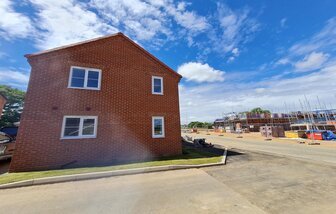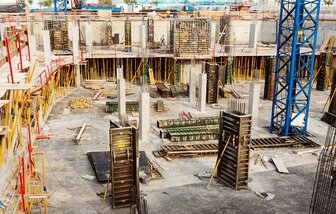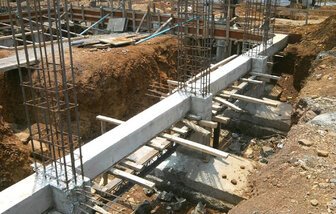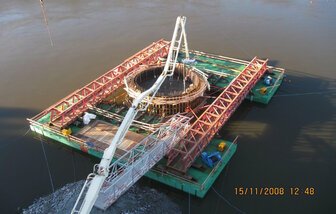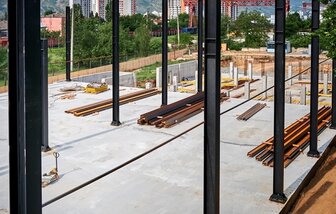Building Raft Foundations: Everything You Need to Know
Welcome to Total Regen, where we specialise in raft building foundation construction in the UK. Raft foundations are a popular choice for many construction projects, providing a stable and durable base for buildings. Explore the benefits of raft foundations, the construction process, and why you should choose us for your raft building foundation needs. Contact us for personalised quotes.
What is a Raft Building Foundation?
A building raft foundation is a type of foundation commonly used in the construction industry in the United Kingdom. It provides support and stability for buildings constructed on weak or unstable soils.
This article discusses the advantages of building raft foundation in the UK, the construction process, and maintenance considerations.
Learn more about this reliable and cost-effective option for constructing buildings in the UK and ensure the longevity and structural integrity of your foundation with proper maintenance and regular inspections.

A building raft foundation is a type of foundation commonly used in the construction industry in the United Kingdom. It is a solid reinforced concrete slab that extends over the entire area of the building, providing support and stability. This type of foundation is particularly suitable for buildings constructed on weak or unstable soils.
There are several advantages to using a building raft foundation in the UK:
- Uniform load distribution: The raft foundation spreads the load of the building evenly over a larger area, reducing the risk of differential settlement.
- Stability: The large surface area of the raft foundation provides stability, making it suitable for buildings in areas prone to earthquakes or high winds.
- Cost-effective: Raft foundations can be more cost-effective compared to other types of foundations, especially in areas with poor soil conditions.
- Reduced excavation: Raft foundations require less excavation compared to other types of foundations, which can save time and money during the construction process.
The cost of a raft building foundation can vary depending on several factors, including the size of the building, the soil conditions, and the location. Here are some approximate cost ranges:
1. Small Residential Building
For a small residential building, such as a single-family home, the cost of a raft foundation can range from £10,000 to £20,000.
2. Medium-Sized Commercial Building
For a medium-sized commercial building, such as an office or retail space, the cost of a raft foundation can range from £50,000 to £100,000.
3. Large Industrial Building
For a large industrial building, such as a factory or warehouse, the cost of a raft foundation can range from £200,000 to £500,000 or more.
It’s important to note that these cost ranges are approximate and can vary significantly depending on the specific project requirements and market conditions.
While raft building foundations offer many advantages, they also come with a few drawbacks that should be taken into account:
1. Cost
Raft building foundations tend to be more expensive compared to other foundation types. The extensive amount of concrete required and the complexity of the construction process contribute to higher costs. However, it’s important to note that the long-term benefits and stability provided by raft foundations may outweigh the initial investment.
2. Excavation and Site Preparation
Before constructing a raft foundation, extensive excavation and site preparation are necessary. The ground needs to be leveled and any obstructions, such as rocks or tree roots, need to be removed. This can be time-consuming and may require additional equipment and labor.
3. Construction Time
The construction of a raft foundation generally takes longer compared to other foundation types. The process involves pouring and curing a large amount of concrete, which requires careful planning and monitoring. Delays in construction can impact the overall project timeline.
4. Limited Design Flexibility
Raft foundations are best suited for buildings with uniform load distribution. They may not be suitable for complex architectural designs or structures with irregular loads. The large, continuous concrete slab limits the flexibility in design and may require additional structural elements to accommodate specific building requirements.
The construction of a building raft foundation in the UK typically involves the following steps:
- Site preparation: The site is cleared of any vegetation or debris, and the topsoil is removed to expose the underlying soil.
- Excavation: The area where the raft foundation will be constructed is excavated to the required depth, taking into account the load-bearing capacity of the soil.
- Reinforcement: Steel reinforcement bars are placed within the excavated area to provide additional strength to the foundation.
- Formwork: Wooden or steel formwork is erected around the perimeter of the excavated area to contain the concrete during pouring.
- Concrete pouring: High-quality concrete is poured into the formwork, covering the entire area of the foundation.
- Curing: The concrete is left to cure and gain strength for a specified period of time, usually around 28 days.
Once the building raft foundation is constructed, it is important to consider the following maintenance and considerations:
- Drainage: Proper drainage systems should be in place to prevent water accumulation around the foundation, which can lead to structural issues.
- Regular inspections: Periodic inspections should be conducted to check for any signs of cracks, settlement, or other potential problems.
- Professional advice: It is advisable to consult with a structural engineer or a qualified professional for any modifications or repairs to the foundation.
Raft building foundations offer excellent stability and are a suitable choice for sites with poor soil conditions or uneven ground. However, they come with certain disadvantages, such as higher costs, extensive site preparation, longer construction time, and limited design flexibility. When considering a raft foundation for your construction project, it’s essential to weigh these factors against the benefits. Consulting with a professional engineer or contractor can help you make an informed decision based on your specific needs and budget.
Soft Strip foundations
Learn about soft strip foundations, a type of shallow strip foundation commonly used in the United Kingdom. Discover how they work, their advantages, and considerations to keep in mind
Trench fill foundation
Trench fill foundations are similar to strip foundations but differ in that the trench is filled with concrete rather than individual concrete or masonry blocks.
Piled foundation
Piled foundations are used when the soil conditions are challenging or when the load on the foundation is particularly heavy. This type of foundation involves driving or drilling deep piles into the ground
What is a raft foundation?
Raft foundations are a popular choice for many construction projects, providing a stable and durable base for buildings. Explore the benefits of raft foundations, the construction process
Piled raft foundation
Piled raft foundations combine the advantages of piled foundations and raft foundations. They involve the use of both piles and a large concrete slab to distribute the load over a wider area.
Caisson foundation
Caisson foundations, also known as pier foundations, are used in areas with a high water table or poor soil conditions. This type of foundation involves drilling or excavating
Pad foundation
Pad foundations, also known as isolated footings, are used to support individual columns or posts. They consist of a single concrete pad that distributes the load from the column to the soil
Building foundation hub
At Total, we are dedicated to providing you with the essential knowledge and resources you need to build a strong foundation in various fields. Whether you are a student, professional, or simply curious a
Ready to start your project?
Let's Work Together
To get started, for general enquiries simply complete the form below. Provide us with your project details, and our team will review your requirements. We will then get back to you with a customised solution that fits your needs. Whether you have a small-scale project or a large-scale development, we have the expertise and resources to handle it. Once we have received your submission, you will receive a confirmation email (Please check all your email boxes)
If you prefer, and have a project in mind and seeking a price you can also send us your project documents and any photographs directly to Price@totalregen.co.uk. We will carefully examine your documents and provide you with a competitive quote together with a timescale from inception through to completion for your project.

